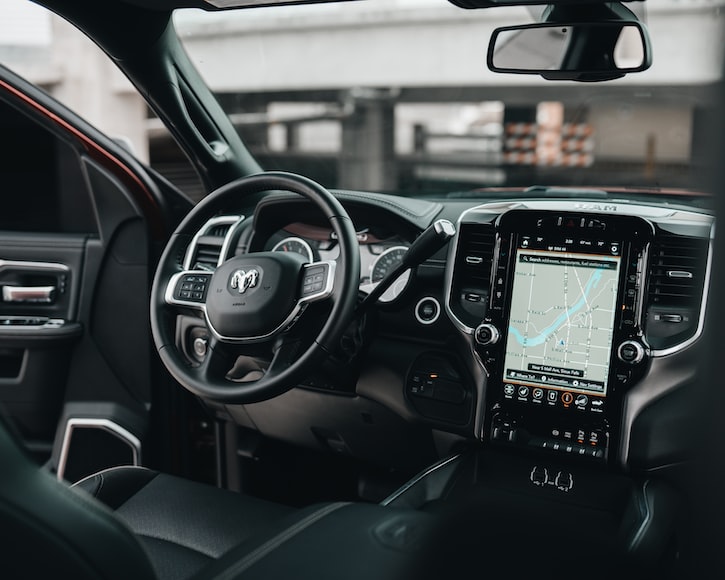
What Are The Latest Car Safety Developments And How Will They Affect Drivers?
As technology advances exponentially across virtually all industries, there are few where the effects have been as tangible as the car industry. From seemingly trivial developments such as the integration of cars and mobile devices, to the truly futuristic breakthrough that was the advent of self-driving cars, every cycle of new models come with some kind of technological innovation.
Car safety is paramount, for both manufacturers and consumers, and as technology works to make driving more comfortable and more enjoyable, there have been, and continue to be, remarkable steps forward in car safety as well. While the benefits may seem obvious; safer cars mean less accidents and, therefore, more lives saved, there are also unexpected financial implications as a result of these technical developments. When you are looking to insure your car, how will the latest car safety developments impact you?
Advanced Driver Assistance Systems
According to reports, driver error or reaction accounts for approximately 70% of all reported road accidents. Advanced Driver Assistance Systems (ADAS) is a term given to encompass all modern car safety developments, covering a range of automated systems designed to eliminate these human errors, making for a more machine-led driving process.
Many of these systems have been available for years, and have therefore been subject to rigorous testing, adjustments and improvements. Forward and rear collision warning systems, for example, are commonplace, with features including lane departure warning systems and road sign recognition functions beginning to appear more regularly.
ADAS are in high demand among consumers, and as new legislation is rolled out, including Joe Biden’s Infrastructure Bill which stipulates that all future cars should be fitted with a range of new safety features, we can expect high levels of ADAS-integration in the near future.
We’ve outlined some of the newest ADAS developments below.
New Developments
While features including autonomous emergency braking (AEB), adaptive cruise control (ACC), and parking sensors are seen in most new cars, there are a range of newly developed ADAS that drivers can expect to see more frequently in the future.
Sensor Fusion is the process of combining the inputs from all ADAS sensors on a vehicle, creating a comprehensive image of the surrounding environment which enables more detailed and accurate safety performance.
Advanced Human-Machine Interfaces (HMIs) are systems designed to streamline the control process for the driver, features include touch screens, swipe gestures and speech recognition technology.
Finally, integration with 5G can allow manufactures to remotely update equipment and software, with added advantages for vehicle cybersecurity.
Costs
While these systems are designed to reduce, and ultimately eliminate, traffic accidents, they do come with some caveats, namely the price tag (News - Alert). ADAS requires many more sensors and electronic control units (ECUs) than cars of yesteryear, and it is the consumer who ultimately bears the financial brunt of these technological augmentations.
As ADAS become more prevalent, and laws requiring them come into effect, consumers can expect to see the price of cars rise as manufacturers attempt to counter their increasing production overheads.
A study by AAA revealed that ADAS-equipped vehicles are far more expensive to repair, with bills reaching nearly twice those of a non-ADAS vehicle following a collision.
Furthermore, we’re seeing more integration between ADAS and the physical components of cars themselves. Rather than these systems being add-ons that can be installed or removed at will, they are more often built into the mechanics of the car. This can result in what should be routine repairs drastically increasing in price, as adjacent ADAS need to be recalibrated, readjusted, and often reinstalled as part of the repair process.
Insurance
In terms of ADAS effects on car insurance, one would think that a reduction in collisions and accidents as a result of new safety developments would drive down insurance costs. However, ADAS-fitted vehicles often have sensors and other sensitive equipment in exposed areas, where they are vulnerable to damage should a collision take place. This means that insurance companies need to pay out more should repairs need to be made.
However, this is offset by a reduction in total claims in ADAS-fitted cars. A study conducted by LexisNexis (News - Alert) Risk Solutions suggested that cars equipped with at least one ADAS feature saw an 8% decrease in collision claim frequency, with a 3% fall in the severity of these claims. Furthermore, the study revealed a 27% reduction in the frequency of bodily injury claims and a 19% fall in the frequency of property damage claims.
Conclusion
Car safety is constantly evolving, technology is at a point where the next breakthrough seems to be just around the corner. While the benefits in terms of driver safety and comfort are undeniable, the financial consequences of these rapid steps forward are less than positive.
Fitting vehicles with ADAS drives down claims for collisions, bodily injury, and property damage, however repair and subsequent insurance costs appear to rise. It’s a balancing act at the moment, one that is sure to level out as ADAS becomes even more normalized, and as we step ever closer towards truly autonomous driving.
